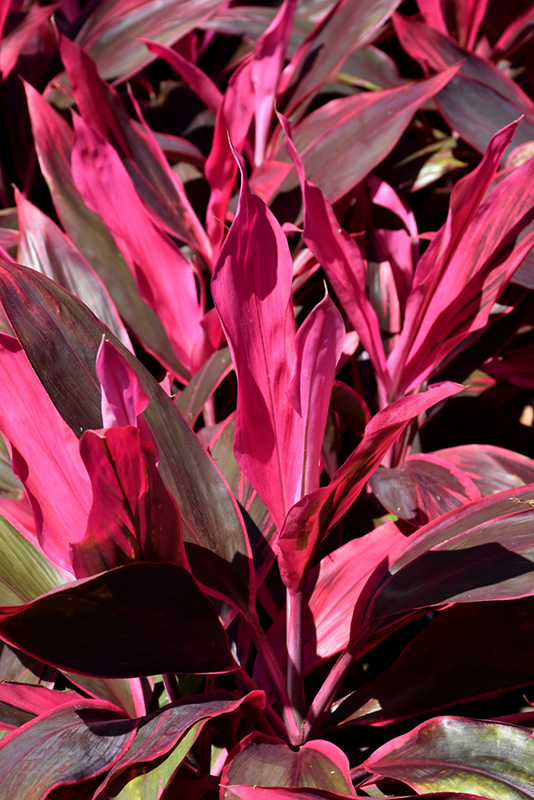Red Sister Hawaiian Ti Plant
Cordyline fruticosa 'Red Sister'
Height: 5 feet
Spread: 3 feet
Sunlight:
![]()
![]()
Other Names: Good Luck Plant
Description:
Young leaves on this variety emerge brilliant pink, then gradually darken to cherry red with burgundy-black variegation; spectacular when massed on the landscape; perfect for adding a lush, tropical feel to indoor spaces
Features & Attributes
Red Sister Hawaiian Ti Plant is primarily valued in the home for its ornamental upright and spreading habit of growth. Its attractive crinkled sword-like leaves emerge hot pink, turning cherry red in color with showy black variegation throughout the year.
This is an open multi-stemmed evergreen houseplant with an upright spreading habit of growth. Its relatively coarse texture stands it apart from other indoor plants with finer foliage. This plant should never be pruned unless absolutely necessary, as it tends not to take pruning well.
Planting & Growing
When grown indoors, Red Sister Hawaiian Ti Plant can be expected to grow to be about 5 feet tall at maturity, with a spread of 3 feet. It grows at a medium rate, and under ideal conditions can be expected to live for approximately 10 years. This houseplant will do well in a location that gets either direct or indirect sunlight, although it will usually require a more brightly-lit environment than what artificial indoor lighting alone can provide. It does best in average to evenly moist soil, but will not tolerate standing water. The surface of the soil shouldn't be allowed to dry out completely, and so you should expect to water this plant once and possibly even twice each week. Be aware that your particular watering schedule may vary depending on its location in the room, the pot size, plant size and other conditions; if in doubt, ask one of our experts in the store for advice. It is not particular as to soil type or pH; an average potting soil should work just fine.
There are many factors that will affect the ultimate height, spread and overall performance of a plant when grown indoors; among them, the size of the pot it's growing in, the amount of light it receives, watering frequency, the pruning regimen and repotting schedule. Use the information described here as a guideline only; individual performance can and will vary. Please contact the store to speak with one of our experts if you are interested in further details concerning recommendations on pot size, watering, pruning, repotting, etc.
-- THIS IS A HOUSEPLANT AND IS NOT MEANT TO SURVIVE THE WINTER OUTDOORS IN OUR CLIMATE --

